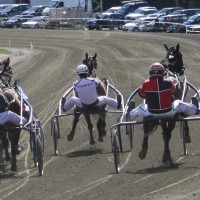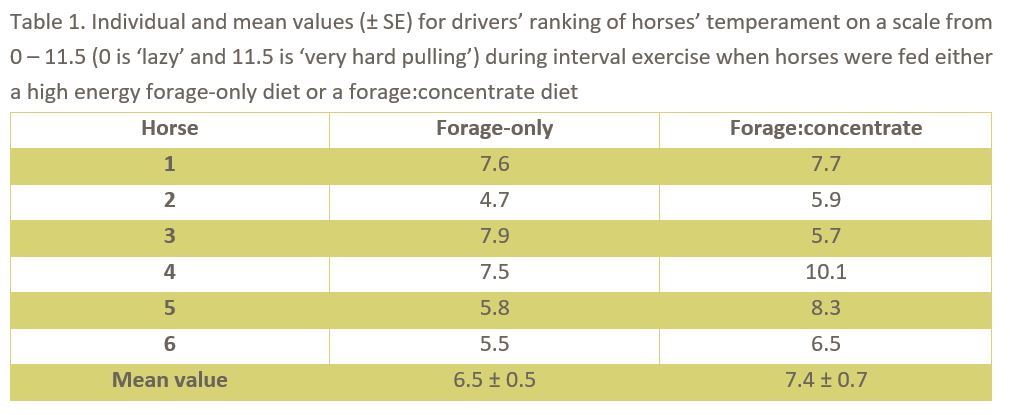Forage-only diets have positive effects on exercise temperament and post-exercise recovery

This study examined the impacts on body weight and exercise response in trotters in training when fed a high energy forage-only diet (haylage, early harvest) compared to a 50:50 forage (late harvest) :concentrate diet. The early and the late harvested haylage were from the same ley, the concentrate consisted of mainly oats and soybean meal and both diets were supplemented with minerals and salt. The two diets, forage-only and forage:concentrate, provided the same daily energy and protein intake.
Three horses started on the forage-only diet and three on the forage:concentrate diet and then they switched so all horses were tested on both diets. The horses were fed the diets for 17 days before exercise tests were performed. The test was an interval exercise with four 600 meters intervals with stepwise increasing speed (average speeds: 10.5-13 m/s) on a track with 0.6 % incline. The horses were tested in pairs and sampling was done before and after the exercise tests. The same driver drove the same horse in both tests and did not know which diet the horse had. After the exercise tests the drivers ranked the exercise temperament, excitability, of the horses.
Before the interval exercise tests the horses tended to be heavier when fed the forage-only diet (mean values: 522 kg vs. 519 kg). Fifteen minutes after the interval exercise tests the horses were weighed again and there were no significant difference in weight loss: on average the horses lost 8.5 kg on the forage-only diet and 7.0 kg on the forage:concentrate diet. But 24 hours after the exercise tests the horses were heavier on the forage-only diet than on the forage:concentrate diet (mean values: 517 kg vs. 512 kg), which indicates a faster recovery on the forage-only diet.
The plasma lactic acid concentration after the exercise tests did not differ between the diets. But on the forage:concentrate diet the horses had slightly higher average heart rates after exercise, and higher breathing frequency 15 and 30 minutes after exercise. There was no statistically significant difference in the drivers’ ranking of the horses’ exercise temperament between the forage-only diet and the forage:concentrate diet. But 4 of the 6 horses had a higher grading for exercise temperament on the forage:concentrate diet (Table 1). This indicates a psychological response, that the higher exercise temperament on the forage:concentrate diet resulted in higher heart rates and breathing frequencies. It is known that concentrate can have the effect of increasing “excitability” in some individuals but the reasons for this are unknown.
In conclusion the diet consisting of only early harvested forage complemented with minerals and salt implied slightly lower average heart rates after exercise and lower breathing frequency 15 and 30 minutes after exercise. And a faster recovery of body weight the first 24 hours.
Sara Muhonen, AgrD

